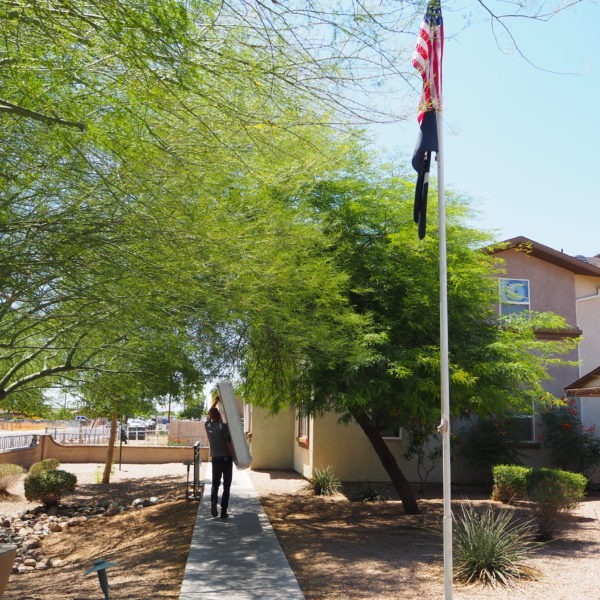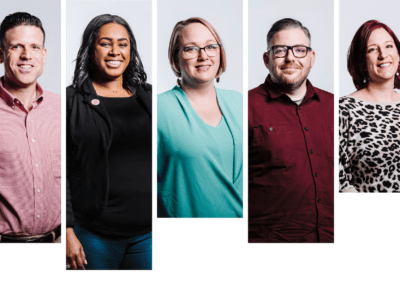The team working to end veteran homelessness in Phoenix has a lot of ground to cover. Sprawling Maricopa County includes the city of Phoenix and spans 9,224 square miles, making it bigger than four states, by area.
It’s comprised of 24 municipalities, several Native American nations, and is among the fastest growing counties in the country, according to the U.S. Census Bureau.
Despite the vastness of the territory, the local team has worked to secure the accurate, real-time, and individual-level data they need to understand the scale of veteran homelessness in their community and exactly who is experiencing it.
Coupled with people power across the region, one of the largest cities in the country is driving progress in reducing veteran homelessness, They reduced the number of veterans experiencing homelessness by half— and they’re working to end it entirely.
“It all starts to snowball,” said Shane Groen, the Chief Programs Officer at the Arizona Housing Coalition. “We are at the top of the hill and we are ready to roll.”
The community’s story was spotlighted in a piece developed by the History Channel and Quicken Loans, Built for Zero’s leading corporate partner.
Watch the Phoenix team explain how Phoenix is working to end veteran homelessness on the History Channel.
A clear picture
Getting to comprehensive, real-time, quality data on everyone experiencing veteran and chronic homelessness in the community, known as By-Name Lists, has readied the ground for change.

As Melanie Lewis Dickerson, Built for Zero’s Portfolio Lead explains, the Phoenix team streamlined their system, so that all the various organizations within Maricopa County are sharing data and resources, in order to better serve people experiencing homelessness.
Collaboration with different actors— like the VA— allowed the team to include critical information like how long the individual was in service and their eligibility for different types of federal programs aimed at supporting veterans.

“There’s not one person who can end this. We as providers have to work together to get this done.”
– Shantae Smith
“Prior to reaching this milestone, conversations were disjointed and focused on the inaccuracy of the data,” she said. “Now it’s focused on what action should be taken based on what the data is showing us.”
Homelessness doesn’t end at a city limit and to truly tackle the issue, the response must be linked as well. In many communities, various organizations work separately to manage the issue of homelessness. In Phoenix, getting all the actors to the same table— literally— has helped them clear individual and systemic barriers.
Every week, representatives from more than 10 agencies meet in person to go through their By-Name Lists to identify the barriers and solutions to ending veteran homelessness, for individuals and for the overall population.
“One of the strengths in our community is coordination and collaboration,” said Shantae Smith, the Human Services Planner of the Maricopa Association of Governments. “We strive to work together as best as we can and really try to problem solve and troubleshoot all the different situations we come across.
Homelessness doesn’t end at a city limit and to truly tackle the issue, the response must be linked as well.
This collaboration and coordination extends beyond these weekly meetings. On many days, she said it’s about ensuring everyone feels supported.
“There’s not one person who can end this,” Smith said. “We as providers have to work together to get this done.”
The Road to Zero
All together, these efforts are having a measurable result: Phoenix is steadily reducing the number of veterans experiencing homelessness on their By-Name List and has laid the groundwork for a regional system designed to house veterans more efficiently. They’ve successfully shortened the length of time it takes for veterans to be housed.
“Our vets are fully aware that we are truly working hard to end this cycle for them: to find them housing, to get them the best possible options, and care to support them moving forward,” Smith said. “They’re becoming more trusting of the system itself and the processes we have in place.”
Groen was asked what advice he would give other large, complex cities working to end homelessness for an entire population. He thought back to the days when they had upwards of 900 veterans experiencing homelessness— a number that is now down to around 400.
“We believe that it’s possible,” he said. “It’s one step at a time.”



